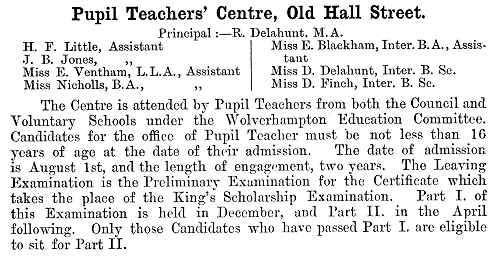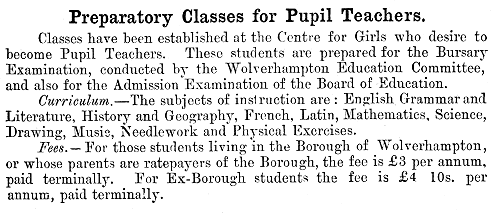|
Education for the Masses
In order to understand more fully the history of St.
Stephen’s School, it is necessary to know something of
the history of the national system of education that
brought the school into being. In this short history of
the development of a national system of education, I
have outlined briefly the beginning of public education
for the masses through to the foundation of St.
Stephen’s School in 1880.
The first successful attempt to cover the country with a
network of elementary schools was a voluntary body
sponsored by the church, the Society for Promoting
Christian Knowledge founded in 1698. Through local
groups this body established thousands of charity
Schools in which children from poor families were taught
to read and some were fed and clothed.
The industrial revolution in the second half of the 18th
century was seen to be sweeping children along with
adults into the factories. This caused the charity
school movement to loose ground, so Robert Raikes and
others, started the Sunday School Movement, Sunday being
the children’s only free day. The Sunday School Movement
had the support of the established church and
nonconformity.
At the beginning of the 19th century, two
men, Dr. Andrew Bell, a church of England clergyman, and
Joseph Lancaster, a Quaker, almost simultaneously, but
independently, developed a system of education that
would be cheap enough to allow a national system of 5
day-a-week schools. They demonstrated that large numbers
of children could be taught with few teachers, by using
pupils as teaching monitors. Voluntary societies were
formed to provide elementary schools run on Bell and
Lancaster lines. These were the National Society for
Promoting the Education of the Poor in the Principles of
the Established Church, and the British and Foreign
Society. Their sectarian rivalry prevented the immediate
formation of a national system.
In 1833 the Government was induced to give the National
and British Societies a grant of £20,000. Previous
proposals for a state system of elementary education had
all failed. The grant was repeated in successive years
and in 1839 the Government established a Committee of
Privy Council on Education to supervise its
distribution.
The committee under the leadership of St. James Kay
Shuttleworth, inspected all grant aided schools,
creating Her Majesty’s Inspectorate of Schools.
Ecclesiastical opposition prevented it forming a state
training college for teachers. In time however, grant
aided denominational training colleges were set up,
modelled on Kay’s own college at Battersea.
In 1846 Kay launched the “Pupil Teacher” scheme where
able elementary school pupils were apprenticed at 13,
for 5 years. These pupils taught during school hours,
what they were taught by the head teacher out of school
hours. At the end of the five years, they sat the
Queen’s Scholarship Examination and if successful, were
eligible for grant-aided places in training colleges,
emerging as teachers, or qualified to take posts in
schools as “uncertified” teachers, dependent upon
examination successes.

From the 1908 Wolverhampton Red
Book.
In 1861 the Newcastle Commission found both the quality
and quantity of elementary education inadequate, yet
upheld the voluntary system. By this time the annual
government grant had risen to £840,000, an amount which
alarmed an economically minded government.
Robert Lowe was at this time, Vice-President of the
Committee of Council. He declared that “if this system
is not to be cheap it shall be efficient, and if it is
not efficient, it shall at least be cheap” and this
resulted in the issue of a “revised code”. This code
imposed upon schools a yearly examination in reading,
writing and arithmetic, and made the teacher’s salary
for the following year, dependent upon his pupil’s
results. This system of payment by results was slowly
relaxed, although not abolished until 1897. It virtually
restricted the curriculum to the three R’s which often
made school a monotonous grind, creating bad feeling
between the teachers and H.M. Inspectors, who conducted
the examination. It did reduce the government grant to
£600,000 in the mid sixties, but even this was
temporary, since it rose again in the late sixties.
The Reform Act of 1867 extended the franchise, giving
the vote to every male householder and this invoked
immediate pressure for a new system of education for the
voters.

From the 1908 Wolverhampton Red
Book.
The first Education Act for England and Wales was Passed
in 1870. It was a compromise because of sectarian
pressures. The state proposed a system whereby school
boards were to be elected to provide elementary schools
at public expense.
These did not replace voluntary schools, but
supplemented them. If the supply of places was
inadequate, the voluntary societies were to be given 6
months the make good the deficiencies.
In areas where this proved impossible, School Boards
were elected to fill the gaps by supervising the
erection and maintenance of the required schools. The
1870 Act laid the foundation of a national system of
public education. In 1876 Lord Sandar’s Act banned
employment of children below the age of 10, and between
10 and 14, only when proficiency in the three R’s at
Standard Four of the revised code had been reached.
This was followed in 1880 by Mundella’s Act, compelling
all school boards to make use of the compulsory
attendance clauses in the 1870 Act, with the minimum
leaving age being established as 10. |